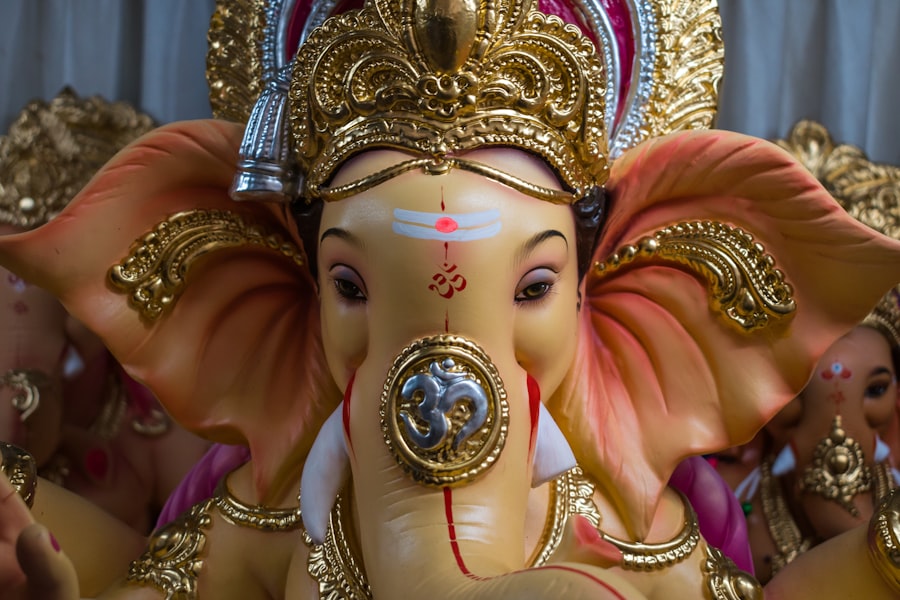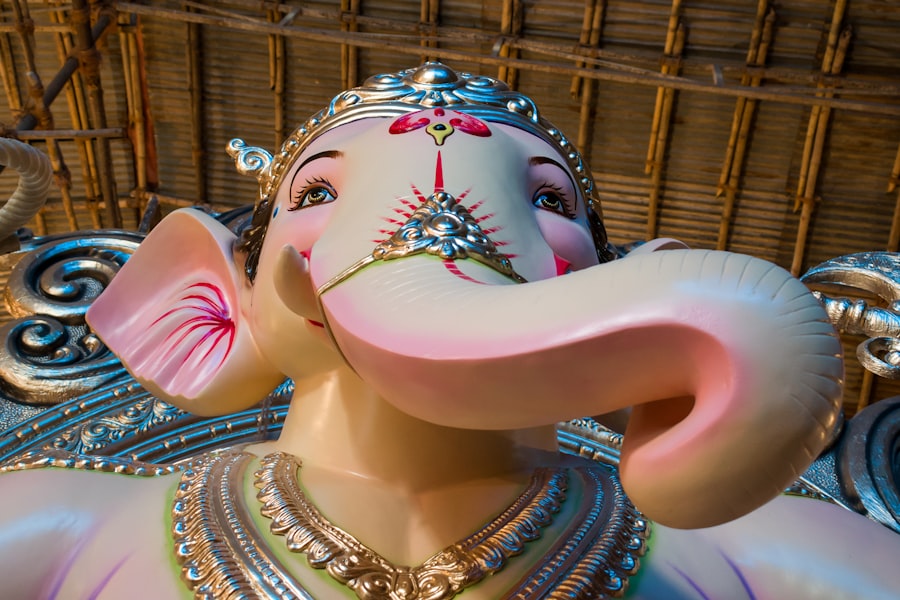Madurai and Tanjore, two cities steeped in history and culture, are located in the southern Indian state of Tamil Nadu. Madurai, often referred to as the “Athens of the East,” is one of the oldest continuously inhabited cities in the world, with a history that dates back over 2,500 years. It is renowned for its vibrant culture, bustling markets, and, most notably, its stunning temples.
Tanjore, on the other hand, is famous for its rich artistic heritage and is home to some of the most exquisite examples of Dravidian architecture. The two cities, while distinct in their offerings, share a common thread of historical significance and cultural richness that makes them must-visit destinations for travelers seeking to immerse themselves in the essence of South India. Both cities are easily accessible from each other, making it convenient for travelers to explore their unique attractions.
Madurai’s Meenakshi Amman Temple, with its towering gopurams (gateway towers) adorned with intricate sculptures, draws visitors from around the globe. Tanjore’s Brihadeeswarar Temple, a UNESCO World Heritage Site, showcases the grandeur of Chola architecture and is a testament to the artistic prowess of ancient India. Together, these cities offer a captivating glimpse into the past while providing a vibrant backdrop for contemporary life.
Key Takeaways
- Madurai and Tanjore are two culturally rich cities in the southern state of Tamil Nadu, India.
- Madurai is known for its historical significance and is home to the famous Meenakshi Amman Temple.
- Tanjore boasts magnificent temples, including the Brihadeeswarar Temple, showcasing the architectural brilliance of the Chola dynasty.
- Madurai offers a vibrant cultural experience with its bustling markets, traditional music, and dance performances.
- Tanjore’s art and architecture, including the exquisite Tanjore paintings and intricate carvings, are a must-see for art enthusiasts.
Exploring the Rich History of Madurai
Madurai’s history is a tapestry woven with tales of kings, poets, and scholars. The city was once the capital of the Pandya dynasty, which flourished between the 6th century BCE and the 16th century CE. The Pandya rulers were known for their patronage of literature and art, fostering an environment where Tamil poetry and culture thrived.
The famous Tamil poet Tiruvalluvar is believed to have lived in Madurai, and his work continues to influence Tamil literature today. The city’s historical significance is further underscored by its role as a center for trade and commerce, attracting merchants from various parts of the world.
The Nayak dynasty, which ruled from the 16th to the 18th centuries, played a crucial role in shaping the city’s architectural heritage. They constructed many of the temples and palaces that still stand today, including the magnificent Meenakshi Temple complex. This temple not only serves as a religious site but also as a symbol of Madurai’s historical importance.
The intricate carvings and towering structures reflect the architectural brilliance of the Nayaks and their commitment to preserving Tamil culture.
The Magnificent Temples of Tanjore

Tanjore is home to some of the most magnificent temples in India, with the Brihadeeswarar Temple being the crown jewel. Built during the reign of Rajaraja Chola I in the early 11th century, this temple is an architectural marvel that showcases the zenith of Chola architecture. The temple’s towering vimana (shrine tower) rises to an impressive height of 66 meters and is topped with a massive granite dome weighing approximately 80 tons.
The intricate carvings that adorn its walls depict various deities and mythological scenes, offering a glimpse into the artistic sensibilities of the time. Another notable temple in Tanjore is the Gangaikonda Cholapuram Temple, which was built by Rajendra Chola I to commemorate his victory over the Ganges River. This temple is often overshadowed by its more famous counterpart but is equally impressive in its design and craftsmanship.
The temple complex features exquisite sculptures and detailed frescoes that narrate stories from Hindu mythology. Visitors can spend hours exploring these sacred spaces, marveling at the artistry that has stood the test of time.
Experiencing the Cultural Heritage of Madurai
| Aspect | Metrics |
|---|---|
| Number of Visitors | 500,000 annually |
| Main Attractions | Meenakshi Amman Temple, Thirumalai Nayakkar Palace, Gandhi Memorial Museum |
| Cultural Events | Chithirai Festival, Float Festival, Meenakshi Thirukalyanam |
| Local Cuisine | Madurai Jigarthanda, Paruthi Paal, Kari Dosa |
Madurai’s cultural heritage is vibrant and multifaceted, deeply rooted in its traditions and festivals. One of the most significant events in Madurai is the Meenakshi Tirukalyanam festival, which celebrates the divine marriage of Goddess Meenakshi and Lord Sundareswarar. This grand festival attracts thousands of devotees who participate in processions, rituals, and cultural performances that showcase traditional music and dance forms like Bharatanatyam.
In addition to its festivals, Madurai is also known for its traditional arts and crafts. The city is famous for its handloom textiles, particularly cotton sarees known as “Madurai Sungudi.” These sarees are characterized by their vibrant colors and intricate tie-dye patterns.
Local artisans have been practicing this craft for generations, ensuring that this traditional art form continues to thrive. Visitors can explore local markets where these textiles are sold alongside other handicrafts such as bronze sculptures and wooden carvings, providing a unique opportunity to take home a piece of Madurai’s rich cultural heritage.
Indulging in Tanjore’s Art and Architecture
Tanjore’s artistic legacy extends beyond its temples; it encompasses a wide range of art forms that reflect the region’s cultural richness. Tanjore painting is one such art form that has gained international acclaim for its intricate designs and use of gold foil. Originating in Tanjore during the 16th century, these paintings often depict Hindu deities and are characterized by their vibrant colors and three-dimensional effect created by layering gold leaf.
Artisans meticulously craft each piece, ensuring that traditional techniques are preserved while also adapting to contemporary tastes. The architecture of Tanjore is another aspect that captivates visitors. The city boasts several palaces that showcase a blend of Dravidian and Indo-Saracenic styles.
The Tanjore Maratha Palace, built by the Maratha rulers in the 17th century, features stunning courtyards, ornate pillars, and beautifully painted ceilings that reflect the artistic influences of various dynasties. The palace complex also houses a museum that displays artifacts from Tanjore’s royal past, including weapons, coins, and traditional costumes. Exploring these architectural wonders provides insight into Tanjore’s historical significance as a center of power and culture.
Sampling the Local Cuisine in Madurai and Tanjore

The culinary landscape of Madurai and Tanjore is as rich as their history and culture. Madurai is particularly famous for its street food scene, where vendors serve up an array of mouthwatering dishes that tantalize the taste buds. One cannot visit Madurai without trying “idli” (steamed rice cakes) served with spicy sambar (lentil stew) and coconut chutney.
Another local favorite is “kothu parotta,” a dish made from shredded parotta (flaky flatbread) stir-fried with vegetables or meat, seasoned with spices that create a burst of flavors. Tanjore’s cuisine also boasts unique dishes that reflect its agricultural heritage. The region is known for its rice-based dishes, particularly “arisi upma,” a savory dish made from rice flour cooked with spices and vegetables.
Additionally, Tanjore is famous for its sweets like “mahalabath,” a rich dessert made from milk and flavored with cardamom and saffron. Local restaurants often serve traditional thalis (platters) that offer a variety of dishes on a single plate, allowing diners to experience an array of flavors in one meal.
Discovering the Natural Beauty of Madurai and Tanjore
While Madurai and Tanjore are primarily known for their historical and cultural significance, they also offer stunning natural landscapes that enhance their appeal as travel destinations. Madurai is surrounded by picturesque hills and lush greenery, making it an ideal spot for nature lovers. The nearby hills of Alagar Kovil provide opportunities for trekking and exploring scenic viewpoints that overlook the city.
The serene atmosphere combined with panoramic views creates a perfect escape from urban life. Tanjore’s natural beauty is equally captivating, particularly with its proximity to water bodies like the Kaveri River. The river not only sustains agriculture in the region but also offers opportunities for boating and fishing.
Additionally, Tanjore is home to several gardens and parks where visitors can relax amidst nature’s tranquility. The Thanjavur Palace Gardens are particularly noteworthy for their well-maintained landscapes adorned with flowering plants and ancient trees that provide a peaceful retreat.
Tips for Planning the Ultimate Travel Package to Madurai and Tanjore
When planning a trip to Madurai and Tanjore, it’s essential to consider several factors to ensure an enriching experience. First, timing your visit can significantly impact your experience; visiting during festivals like Meenakshi Tirukalyanam or Thanjavur Dance Festival can provide unique insights into local traditions but may also mean larger crowds. Therefore, booking accommodations well in advance is advisable during peak seasons.
Transportation between Madurai and Tanjore is convenient due to well-connected roadways; hiring a local guide can enhance your experience by providing historical context at various sites. Additionally, consider exploring local markets for authentic souvenirs such as handwoven textiles or traditional handicrafts; bargaining is common practice here. Lastly, indulging in local cuisine should be on your itinerary—don’t hesitate to try street food but ensure you choose vendors with good hygiene practices to enjoy safe culinary adventures.
By immersing yourself in the rich history, culture, art, cuisine, and natural beauty of Madurai and Tanjore, you will undoubtedly create lasting memories that reflect the essence of South India’s heritage.
FAQs
What is included in a Madurai Tanjore travel package?
A Madurai Tanjore travel package typically includes accommodation, transportation, sightseeing tours, and sometimes meals. It may also include the services of a tour guide.
What are some popular attractions included in a Madurai Tanjore travel package?
Popular attractions included in a Madurai Tanjore travel package may include Meenakshi Amman Temple, Thirumalai Nayakkar Palace, Gandhi Memorial Museum, Brihadeeswarar Temple, and Tanjore Royal Palace.
How long does a typical Madurai Tanjore travel package last?
A typical Madurai Tanjore travel package can last anywhere from 3 to 5 days, depending on the itinerary and the number of attractions included in the package.
What is the best time to visit Madurai and Tanjore?
The best time to visit Madurai and Tanjore is during the winter months from November to February when the weather is pleasant and ideal for sightseeing.
Are there options for customization in a Madurai Tanjore travel package?
Yes, many travel agencies offer customizable Madurai Tanjore travel packages where travelers can add or remove attractions, choose their preferred accommodation, and select transportation options according to their preferences.

